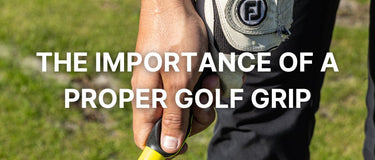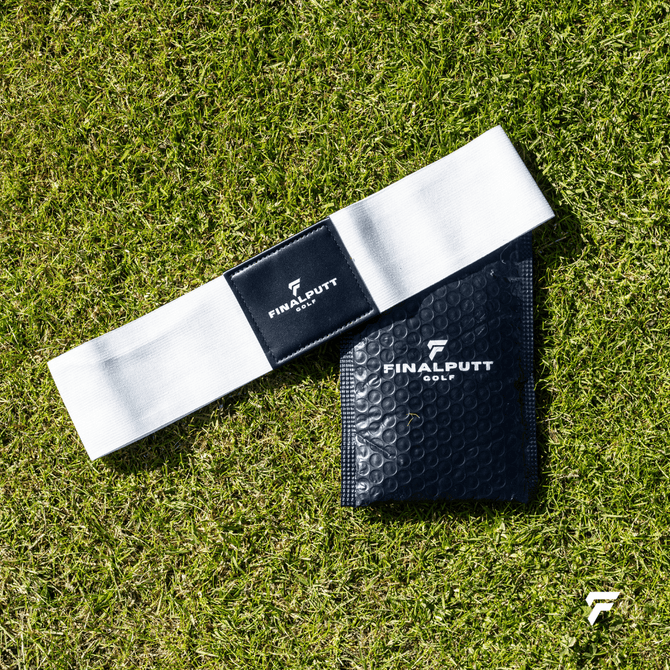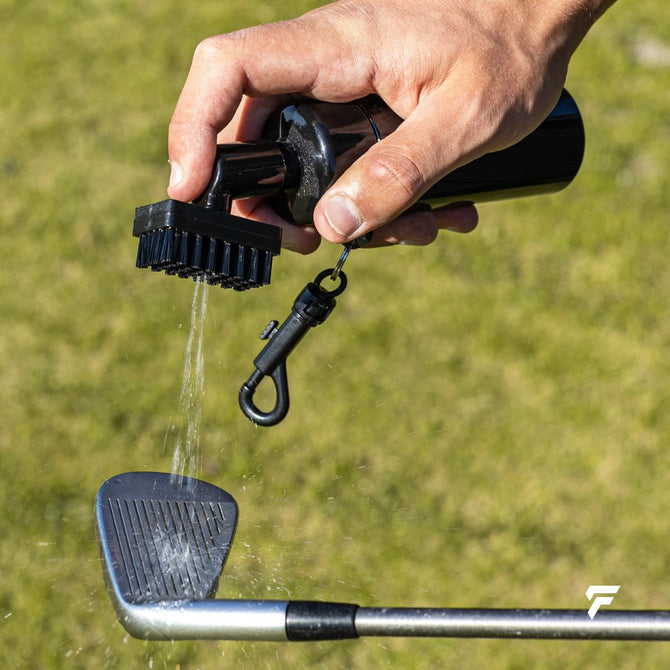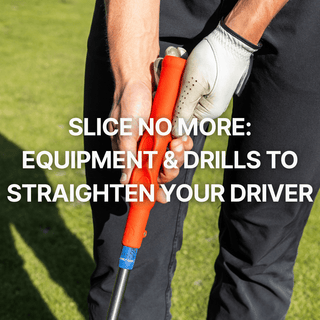
Master Your Golf Game: The Importance of a Proper Golf Grip
Blog Introduction:
The golf grip is the foundation of every great swing. Whether you're a beginner or an advanced player, learning to hold the club properly can have a transformative impact on your game. It’s one of the simplest adjustments, yet it influences swing path, clubface control, and ultimately, where the ball lands. This blog will walk you through everything you need to know about the importance of a proper golf grip, breaking down its mechanics, its impact on different shots, and how you can improve this essential skill.

1. Why the Grip Matters in Golf
The grip is the only contact point between you and the club, which makes it critical to control. A good grip ensures that the clubface remains square to the ball at impact, which is crucial for accuracy and distance. By holding the club correctly, golfers gain more control over their shots, reduce the risk of slicing or hooking, and achieve greater consistency. Improper grip techniques can lead to poor ball striking, misalignment, and even physical discomfort.
2. Types of Grips and Their Unique Advantages
- Neutral Grip: The neutral grip is when both hands are placed on the club with a balanced, “neutral” position. This grip is generally recommended for beginners and provides a solid balance of power and control.
- Strong Grip: A strong grip involves rotating the hands more to the right (for right-handed players). This grip can encourage a closed clubface, reducing slices and adding distance, especially useful for players looking to generate more power.
- Weak Grip: A weak grip, with hands rotated to the left (for right-handers), can help players who tend to hook the ball by encouraging an open clubface.
3. How to Find the Perfect Grip: Step-by-Step Guide
- Step 1: Start with the left hand (for right-handed players). The club should rest diagonally across the fingers rather than the palm.
- Step 2: Place the right hand so that it overlaps (or interlocks) with the left hand, depending on your preference.
- Step 3: Ensure that the “V” created by your thumb and index finger points towards your right shoulder.
Mastering these fundamentals can set a consistent foundation for any golfer's grip, regardless of experience.

4. Common Mistakes in Grip Technique and How to Fix Them
- Incorrect Hand Positioning: Many players grip the club with the palms instead of the fingers, leading to less control and tension in the wrists.
- Excessive Grip Pressure: Gripping the club too tightly can lead to tension, impacting swing speed and fluidity.
- Overlapping Too Much or Too Little: The position of the hands on the grip should feel natural, with the fingers and palms working together to support the club. Finding the right balance is key to achieving a consistent grip.

5. How Proper Grip Prevents Common Swing Errors
A proper grip helps eliminate common swing issues like the dreaded slice, hook, and loss of power. A neutral grip is ideal for preventing over-rotation of the hands and helps to maintain square impact.
- For example, if you’re struggling with slices, adjusting to a stronger grip can help reduce the open clubface that causes the slice.
- If you’re hooking the ball, a weaker grip can help you keep the face square through impact.
6. Grip Training Aids to Improve Your Technique
- The Perfect Grip: This tool ensures that your hands are positioned correctly every time, training muscle memory for a reliable grip.
- Alignment Sticks: Although mainly used for swing path and alignment, these can be helpful in grip practice by ensuring your hands stay in sync with body rotation.
- Unity Ball: By holding your arms in sync with the body, the Unity Ball naturally improves grip control throughout the swing.
Each training aid can be a great addition to your practice routine, helping you refine your grip, ensure consistency, and improve ball contact.

7. How a Proper Grip Improves Short Game Control
In the short game, the grip is essential for touch and finesse. Whether chipping, pitching, or putting, maintaining a light but secure grip helps improve control and feel. For example, in putting, a soft grip allows you to control the speed and line better, leading to improved accuracy on the greens.
8. The Mental Side of the Golf Grip
Having a solid grip technique can provide psychological benefits, helping players approach each shot with confidence. The grip is the starting point for every swing, and mastering it reduces second-guessing and increases consistency, especially under pressure.
Conclusion
A proper golf grip is the cornerstone of a consistent, controlled, and powerful swing. From reducing mishits to enhancing control, a sound grip technique influences every aspect of your game. Whether you’re looking to increase accuracy, consistency, or power, refining your grip is one of the best investments you can make in your golf game. Start practicing with these tips and consider using training aids like the Perfect Grip Mold to improve your grip faster and more efficiently.






